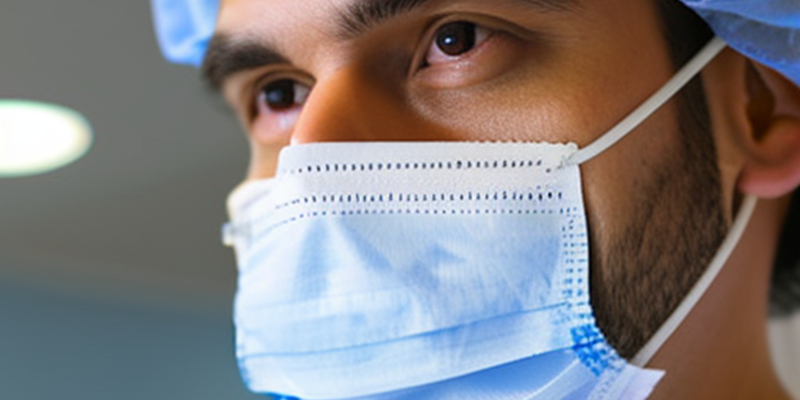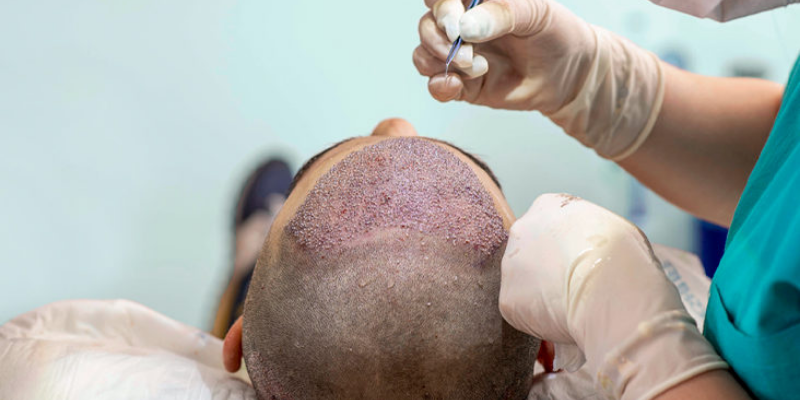Hair Transplant Surgery Long Term Side Effects
First of all, hair transplant surgery is a kind of microsurgery that is used to make someone look better. Like any other surgery, hair transplant surgeries put the patient’s health first. You’ll see that problems can happen with even the most simple tasks. And, no matter how little it hurts, there are hair transplant surgery long term side effects, just like with any other procedure. The side effects of getting a hair transplant aren’t that bad. And a good surgeon like ours will go a long way toward making sure that the more dangerous ones don’t hurt you.
This condition is caused by damage to the hair follicles during the hair transplant process, damage to the hair follicles from a blow to the head, or not enough food getting to the hair follicles in the transplanted area. One of the most common bad effects of hair transplantation is that the transplanted roots don’t grow. This can affect part or all of the hair follicles in the area. Due to tissue loss in the transplanted area, more and more people are getting hair transplants to hide wound and burn scars.
What Causes Hair Transplant Surgery Long Term Side Effects?
The most common bad side effect of hair transplantation is bleeding. Depending on how fast the person’s blood clots, this side effect could cause the hair follicles to get very crusty after the procedure. After a hair transplant, you might see crusting. Before the procedure, the person should be checked to see how fast they bleed and how fast their blood clots. As needed, the person should be given blood thinners or blood clotting drugs to keep their blood thinners or blood clotting drugs at normal levels.
Another problem that might happen after hair transplantation is that hair might start to grow in the wrong direction. This hair transplant problem happens when the planning for the hair transplant is done wrong. So that the right angle is not used to open the channels. If the channels that need to be opened when the hair follicles are planted and planned are opened at the right angles and the front hairline is taken into account, the hair follicles will grow in their natural shape. One of the bad things about hair transplantation is that it could lead to an infection. With every procedure, there is a chance of getting an infection. So as to lower the risk that usually happens with the FUT Method. This requires cutting and sewing, so there are two things to think about.
Folliculitis
Folliculitis is an infection of the transplanted hair follicles. It doesn’t happen very often, and when it does, it’s almost always because the surgeon did something wrong. When this happens, the skin around the grafts on the side that got the transplant looks irritated and scarred. It can be treated with a moderate antibiotic cream supplied with the post-care instructions drugs. If the problem keeps happening even after the application, talk to your surgeon about it.
You must do two things to avoid problems like this. First and foremost, you should always treat your head well. But even before that, you should have your surgery done at a place with a good reputation and skilled doctors, like ours.
With the help of new technology, we can now do our modern hair transplants much more easily than before. We would like to say that there are some procedures that don’t cause as many problems as other procedures do. There are a lot of things that can cause problems during hair transplant surgery, like how healthy the person is and how many illnesses he has had. By taking blood from people before they get hair transplants, places that do hair transplants can keep a lot of different diseases in check. Then, they get more information about potentially dangerous diseases.
Shedding
Two to four weeks after your hair transplant procedure, you may see hairs from the graft fall out. Don’t worry; it’s just a part of what needs to happen. This kind of hair loss is called “Shock Loss,” and it is in no way unique to hair transplants. When the body is suddenly put under a lot of physical stress, this is called a “shock loss.” It occurs as a result of the body’s need to reroute blood flow to the operated area, as in a more invasive surgical treatment. When a large amount of the blood that flows through your body is redirected, it is taken away from certain areas.
The scalp is one of the first places that it draws blood from. Why are these things happening? Because, technically speaking, you don’t need hair to live. It’s not a vital organ, and it’s not even alive. When there is less blood going to the scalp, the hair follicle underneath it doesn’t get the nutrients it needs to keep making hair. As a result, hair stops growing prematurely and enters the resting phase’ of the hair development cycle, when it merely waits to fall. Because of this, shock loss happens. Once the part of the body that was hurt has healed, blood flow and hair growth will return.
Dermoid Cyst
A dermoid cyst is not something that happens very often. Dermoid cysts are caused by channels that are opened too deeply during hair transplantation and hair follicles that are transplanted deeper than they need to be. This is one of the bad things that can happen after a hair transplant. A few weeks after the procedure, permanent pimple-sized cysts form in the hair follicles. For dermoid cysts not to form, hair follicles must be transplanted at the right depth.
People who have had heart disease before have a harder time getting surgery. It takes some time to do hair transplants on people with serious diseases like cancer or the liver virus. Need to check with their doctor first. More people with diabetes or high blood pressure have their hair transplanted. We should pay attention to a few things when we compare ourselves to healthy people. Before the surgery, we need to take a few steps to avoid problems caused by these diseases. If we don’t control high blood pressure and diabetes, people who have these diseases can’t get hair transplants. We need the person’s doctor to say that this is okay.
Hair Transplant Surgery, Turkey Medical Clinics
For hair transplant surgery, Turkey is an increasingly popular destination due to its combination of affordable prices, highly skilled medical professionals, and excellent post-operative care. The popularity of these medical clinics has grown in recent years as more and more patients from around the world seek out their services. Patients can rest assured knowing that they will receive the best possible care for hair transplant at these clinics, as each one is equipped with the latest in surgical technology and a team of experienced professionals who are committed to providing quality results.

Additionally, many of these clinics provide patient support throughout their recovery process, making sure they are fully informed and comfortable every step of the way. For those looking for an effective solution to hair loss or thinning issues, hair transplant surgery Turkey clinics offer an ideal option. Regarding hair restoration surgery abroad, Turkey medical clinics should be at the top of their list due to their outstanding reputation in providing natural-looking results with minimal side effects. During your consultation, you can discuss any questions or concerns that you may have as well as get answers to all of your questions.



